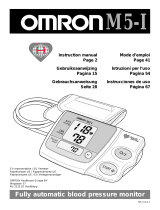Kinetik Blood Glucose Monitor User manual
- Category
- Blood pressure units
- Type
- User manual
This manual is also suitable for
Kinetik Blood Glucose Monitor: Manage your diabetes with accuracy and ease. This user-friendly device allows for precise blood glucose measurements at home. Its compact design and simple operation make it ideal for routine monitoring. Stay informed about your blood sugar levels and take control of your diabetes management.
Kinetik Blood Glucose Monitor: Manage your diabetes with accuracy and ease. This user-friendly device allows for precise blood glucose measurements at home. Its compact design and simple operation make it ideal for routine monitoring. Stay informed about your blood sugar levels and take control of your diabetes management.



















-
 1
1
-
 2
2
-
 3
3
-
 4
4
-
 5
5
-
 6
6
-
 7
7
-
 8
8
-
 9
9
-
 10
10
-
 11
11
-
 12
12
-
 13
13
-
 14
14
-
 15
15
-
 16
16
-
 17
17
-
 18
18
-
 19
19
Kinetik Blood Glucose Monitor User manual
- Category
- Blood pressure units
- Type
- User manual
- This manual is also suitable for
Kinetik Blood Glucose Monitor: Manage your diabetes with accuracy and ease. This user-friendly device allows for precise blood glucose measurements at home. Its compact design and simple operation make it ideal for routine monitoring. Stay informed about your blood sugar levels and take control of your diabetes management.
Ask a question and I''ll find the answer in the document
Finding information in a document is now easier with AI
Related papers
-
Kinetik user manual User manual
-
Kinetik user manual User manual
-
Kinetik user manual User manual
-
Kinetik user manual User manual
-
Kinetik BPM 3 User manual
-
Kinetik BPM2 Series User manual
-
Kinetik BPM100 User manual
-
Kinetik WBP1 User manual
-
Kinetik BPM1KTL Series Staff Training Manual
-
Kinetik Blood Glucose Monitor Quick start guide
Other documents
-
Omron 705CP-II User manual
-
 Omron Healthcare 705IT User manual
Omron Healthcare 705IT User manual
-
 Omron Healthcare M5-I User manual
Omron Healthcare M5-I User manual
-
Omron M4-I User manual
-
Omron M5-I - HEM-757-E User manual
-
Drive Medical Economy Automatic Blood Pressure Monitor Upper Arm Owner's manual
-
Drive Medical Automatic Blood Pressure Monitor Wrist Model Owner's manual
-
Omron Healthcare Automatic Blood Pressure Monitor User manual
-
Drive Medical Deluxe Automatic Blood Pressure Monitor Upper Arm Owner's manual
-
Bluestone W010025 Installation guide




















